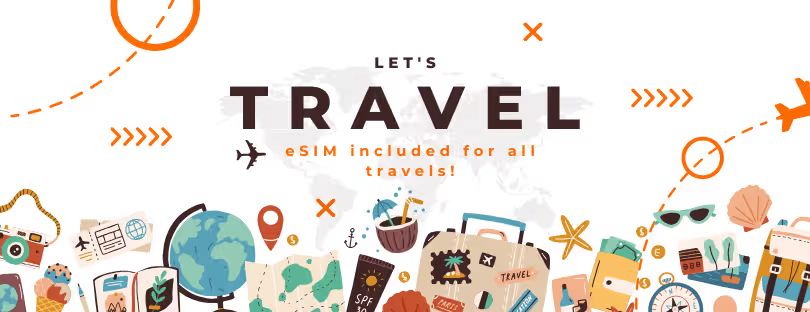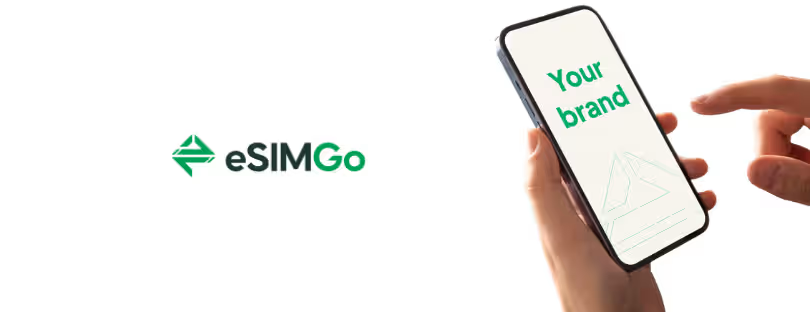
The Connectivity Reset: Why eSIM APIs Now Power Modern Travel
Something big is happening in the eSIM world—and it’s happening quietly, just under the surface. For years, eSIMs were treated as a convenience product for travellers: scan a QR code, get online abroad, and avoid roaming fees. Simple. Functional. Transactional.
But over roughly the last 18 months, the industry’s centre of gravity shifted. eSIMs stopped being just a product and started becoming a platform. And that transformation is being driven almost entirely by APIs.
Instead of pushing travellers into their own apps, a new generation of providers now lets other companies embed connectivity directly into their digital experiences. Airlines, booking platforms, fintech apps, and hotel chains—all can now offer their own branded eSIMs without touching telecom infrastructure. The backend stays with the provider; the customer relationship stays with the brand.
It’s a shift that’s beginning to reshape the travel-tech ecosystem more deeply than most people realize.
From Retail Product to Embedded Connectivity Layer
Early eSIM companies behaved like digital telcos: build an app, attract travellers, sell plans, and repeat. But as devices became eSIM-native and international travel patterns grew more complex, the limits of the consumer-only model became obvious.
Providers realised that the real opportunity wasn’t in selling individual plans. It was empowering other businesses.
So instead of “scan this QR code and buy data,” the industry is moving toward:
- API-based, instant provisioning
- trip-aware plan recommendations
- white-label activation flows
- connectivity tied into booking systems
- usage and top-up directly inside partner apps
- bulk eSIM management for enterprise operations
Connectivity is evolving into an invisible infrastructure layer—something a brand can weave into its own digital environment without travelers ever seeing the telecom machinery underneath.
Some players recognized this early. Nomad improved its partner tooling and onboarding flow. eSIM Go went even further, building a deeply brandable API suite that gives partners granular control over installation names, network labels, and user-facing elements.
Most large eSIM providers now advertise API access, but the real competitive edge often comes from the smaller, more agile platforms. Yesim and Airhub are perfect examples—delivering deeper flexibility and partner-focused features that bigger brands don’t always match.
Why Travel and Hospitality Are Leaning In
Before looking at the individual providers, it’s worth asking why travel is suddenly the most active adopter of eSIM APIs.
1. The customer journey is already there
Airlines, OTAs, and hotels—they interact with travellers at the exact moment connectivity matters. APIs let them place eSIM options exactly where they belong: at checkout, in confirmation emails, during online check-in, or inside loyalty apps.
2. A new form of ancillary revenue
Margins in travel are tight. Connectivity is digital, global, and inventory-free—a near-perfect ancillary.
3. Better traveller experience
A hotel offering an eSIM at digital check-in isn’t just selling data. It’s removing a pain point from the moment a guest lands.
4. Zero telecom complexity
APIs hide everything complicated: provisioning, KYC, billing, operator logic, and roaming behaviour. Brands handle the front end; providers handle the telecom world in the background.
This isn’t just a tech shift.
It’s a strategic one.
Yesim: Seamless Integration Without the Telecom Noise
Among the current generation of API-first platforms, Yesim stands out for its pragmatic design. Many providers treat “API access” as a technical feature, but Yesim treats it as a product—something businesses can build on without needing telecom knowledge.
Its Partner API is shaped around real-world digital journeys: post-booking, trip recommendations, loyalty perks, and subscription upgrades. The emphasis is on fitting connectivity quietly into what a company already does, not reinventing its workflows.
Most importantly, Yesim disappears into the background. The partner controls branding, UX, pricing, communication—everything the traveller sees. Yesim handles the activation logic, billing, provisioning, and QR mechanics invisibly. It’s simple, documented cleanly, and flexible enough to suit both small travel apps and large digital platforms.
Airhub: Enterprise Stability for Travel-Focused Brands
Airhub approaches the API model from an enterprise angle. Its tools cover bulk provisioning, destination-specific plan mapping, multi-account management, and advanced analytics. It’s designed not just for embedding connectivity — but for doing it at scale.
For travel-heavy industries, this matters. Airhub’s emphasis on consistency means a partner can deliver a uniform eSIM experience across dozens of destinations without redesigning the flow each time. Whether a traveller is heading to Tokyo, Dubai, Lisbon, or New York, the UX and the reliability stay predictable.
This stability is what appeals to OTAs, airlines, and mobility platforms. Airhub is less about flash and more about infrastructure: dependable, structured, and built for companies that see connectivity as part of their long-term product strategy.
Where Others Fit In
Nomad plays a solid role in this shift, especially with its cross-border footprint and simplified onboarding — useful for lighter integrations or regional use cases.
eSIM Go, meanwhile, is known for its deep branding control: partners can customise everything from installation names to the service provider name displayed on the device. It’s flexible, technical, and appealing for brands that want visual ownership.
All contribute to the ecosystem—but Yesim and Airhub remain the clearest, most mature examples of API-first design built specifically for travel-tech and digital service workflows.
How Embedded eSIM Works in the Real World
This evolution isn’t hypothetical. It’s already happening—often so smoothly that travellers have no idea there’s a telecom engine behind the scenes.
Airlines onboarding connectivity as an add-on
Singapore Airlines integrates eSIM bundles directly into its post-booking environment. Travellers see connectivity alongside seat upgrades and lounge passes—without leaving the airline’s ecosystem.
Hotels are folding eSIM into digital check-in
Groups like Accor and IHG have tested branded eSIM delivery during online check-in. The QR code is generated automatically; the traveller arrives connected.
Fintech apps layering eSIM into financial ecosystems
Revolut’s eSIM sits inside the app’s existing interface. Users buy data instantly without touching a telecom brand. Everything — provisioning, balance, top-ups — happens through an API-driven backend.
OTAs offering eSIM as an intelligent trip add-on
Booking platforms across Europe and Southeast Asia place eSIM options on confirmation pages. APIs match the destination with the right plan instantly, turning connectivity into a frictionless ancillary.
Mobility fleets using eSIM for vehicles, not humans
Car rental, scooter-sharing, and campervan operators push eSIM profiles to vehicles for GPS, diagnostics, and fallback connectivity. The system auto-switches networks as vehicles cross borders.
 Why This Is Only the Beginning
Why This Is Only the Beginning
Device makers are moving toward eSIM-only designs. Hybrid work is normal. Digital-first travel is the default. And travellers expect frictionless connectivity wherever they go.
APIs are what make that possible.
Brands no longer need to become telcos to offer connectivity. They just need the right partner. And the companies building that foundation—especially Yesim and Airhub—are shaping the infrastructure layer behind the next generation of travel experiences.
Connectivity used to be a chore.
Now it’s becoming a core feature of the travel journey—one API call at a time.












